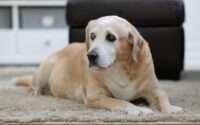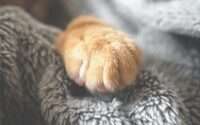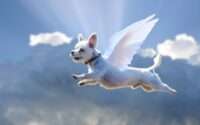Do Labrador Retrievers Shed? The Ultimate Guide to Managing Fur with Practical Tips!
Welcome to our in-depth exploration of shedding in Labrador Retrievers! As beloved companions and popular family pets, Labrador Retrievers bring joy and companionship to countless households around the world.
However, shedding is a common concern among prospective owners and current caregivers alike. In this comprehensive guide, we’ll delve into the nuances of shedding in Labrador Retrievers, providing valuable insights and practical tips for managing shedding effectively.
Understanding Labrador Retrievers
Before we dive into shedding specifics, let’s take a moment to understand the Labrador Retriever breed. Known for their friendly disposition, intelligence, and boundless energy, Labrador Retrievers have captured the hearts of dog lovers everywhere. Originating from Newfoundland, Canada, these versatile dogs were originally bred to assist fishermen, retrieving nets and fish from the chilly waters of the North Atlantic.
Today, Labrador Retrievers are cherished for their versatility and adaptability. Whether serving as guide dogs, search and rescue heroes, or simply beloved family pets, Labs excel in a variety of roles. Their affectionate nature and eager-to-please attitude make them ideal companions for individuals and families of all ages.
When it comes to shedding, Labrador Retrievers are no exception to the rule. Like all dogs, Labs shed as a natural part of their life cycle. However, the frequency and intensity of shedding can vary depending on various factors, including genetics, coat type, and environmental conditions.
Shedding in Labrador Retrievers: The Basics
Shedding is a natural process for all dogs, including Labrador Retrievers. Understanding the basics of shedding can help owners better manage this aspect of their pet’s care. Here’s what you need to know:
- Natural Process: Shedding is a normal part of a dog’s life cycle. It involves the shedding of old or damaged fur to make way for new growth. Labrador Retrievers, like many other breeds, shed year-round, with some seasonal variation.
- Shedding Patterns: Labrador Retrievers typically have a double coat consisting of a dense, water-resistant outer coat and a softer, insulating undercoat. While Labs shed consistently throughout the year, they may experience heavier shedding during seasonal changes, particularly in the spring and fall.
- Factors Influencing Shedding: Several factors can influence the frequency and intensity of shedding in Labrador Retrievers. These include genetics, age, diet, health, and environmental factors such as temperature and daylight hours.
Understanding the basics of shedding in Labrador Retrievers lays the foundation for effective shedding management. In the following sections, we’ll explore specific factors that can impact shedding and provide practical tips for minimizing shedding in your Lab.
Shedding Factors: Genetics and Coat Type
Genetics play a significant role in determining a Labrador Retriever’s shedding tendencies. While all Labs shed to some extent, certain genetic factors can influence the frequency and intensity of shedding. Additionally, Labrador Retrievers come in different coat types, each with its own shedding characteristics:
- Genetic Factors: Some Labrador Retrievers may inherit genes that predispose them to heavier shedding. This can vary from dog to dog, even within the same litter. Understanding your Lab’s genetic background can provide insight into their shedding tendencies.
- Coat Types: Labrador Retrievers come in three primary coat colors: black, yellow, and chocolate. While coat color does not directly correlate with shedding, Labs with thicker or denser coats may shed more than those with finer or shorter coats.
By understanding the genetic and coat-related factors that influence shedding in Labrador Retrievers, owners can take proactive steps to manage shedding effectively.
Managing Shedding: Tips and Techniques
Managing shedding in Labrador Retrievers is essential for maintaining a healthy coat and a clean home. Here are some practical tips and techniques to help minimize shedding:
- Regular Brushing: Regular brushing is key to reducing shedding in Labrador Retrievers. Use a high-quality grooming brush or deshedding tool to remove loose fur and distribute natural oils throughout the coat. Aim to brush your Lab at least a few times a week, paying extra attention to areas prone to matting, such as behind the ears and under the legs.
- Bathing Routine: Bathing your Labrador Retriever regularly can help loosen and remove dead hair, reducing shedding. Use a mild dog shampoo formulated for sensitive skin and avoid over-bathing, as excessive bathing can strip the coat of its natural oils and lead to dryness. Aim to bathe your Lab every 6-8 weeks or as needed.
- Healthy Diet: A balanced diet is essential for promoting a healthy coat and reducing shedding in Labrador Retrievers. Choose a high-quality dog food that is rich in essential nutrients, including omega-3 fatty acids and protein, to support skin and coat health. Avoid overfeeding and monitor your Lab’s weight to prevent obesity, which can exacerbate shedding.
- Supplements: Consider adding supplements to your Labrador Retriever’s diet to support skin and coat health. Omega-3 fatty acids, such as fish oil or flaxseed oil, can help reduce inflammation and improve coat condition. Consult with your veterinarian before adding any supplements to your Lab’s diet.
- Maintain a Clean Environment: Regularly vacuuming your home and washing your Lab’s bedding can help minimize the buildup of loose fur and dander. Consider using a high-efficiency particulate air (HEPA) filter in your home to reduce airborne allergens and keep your indoor environment clean.
By incorporating these tips and techniques into your grooming routine, you can effectively manage shedding in your Labrador Retriever and keep their coat looking healthy and shiny.
Shedding and Health: When to Be Concerned
While shedding is a normal and natural process for Labrador Retrievers, excessive shedding can sometimes be a sign of an underlying health issue. Here’s when to be concerned:
- Sudden Increase in Shedding: If your Labrador Retriever experiences a sudden and significant increase in shedding, it could indicate an underlying health problem such as allergies, hormonal imbalances, or skin infections. Consult with your veterinarian to rule out any medical issues.
- Patchy Hair Loss: Patchy hair loss or bald spots on your Lab’s coat may be a sign of dermatological issues such as mange, ringworm, or bacterial infections. These conditions require prompt veterinary attention and treatment.
- Changes in Coat Quality: Noticeable changes in your Labrador Retriever’s coat quality, such as dryness, dullness, or brittleness, may indicate nutritional deficiencies or other health issues. Ensure your Lab is receiving a balanced diet and consult with your veterinarian if you notice any changes in coat condition.
- Excessive Scratching or Licking: Excessive scratching, licking, or chewing at the skin can lead to hair loss and may indicate underlying allergies, parasites, or skin irritations. Your veterinarian can help identify the underlying cause and recommend appropriate treatment.
Keeping a close eye on your Labrador Retriever’s shedding habits and overall coat condition can help you detect any potential health concerns early and ensure prompt veterinary care when needed.
Shedding Myths and Misconceptions
Shedding in Labrador Retrievers often comes with its fair share of myths and misconceptions. Here, we debunk some of the most common myths surrounding shedding:
- Myth: Shaving your Labrador Retriever reduces shedding.
- Fact: Shaving a Labrador Retriever’s coat can actually disrupt the natural shedding process and lead to skin problems, sunburn, and discomfort. It’s best to avoid shaving your Lab and instead focus on regular grooming practices to manage shedding.
- Myth: Only long-haired dogs shed.
- Fact: Shedding is a natural process for all dogs, regardless of hair length. While longer-haired breeds may have more visible shedding, short-haired breeds like Labrador Retrievers also shed regularly.
- Myth: Certain diets can stop shedding completely.
- Fact: While a balanced diet is essential for promoting healthy skin and coat, no diet can completely eliminate shedding in dogs. Shedding is a natural process that helps dogs maintain a healthy coat and regulate body temperature.
- Myth: Indoor dogs don’t shed.
- Fact: All dogs shed to some extent, regardless of whether they spend most of their time indoors or outdoors. Indoor dogs may shed less frequently than outdoor dogs, but regular grooming is still necessary to manage shedding.
By dispelling these common myths and misconceptions, Labrador Retriever owners can better understand the natural shedding process and implement effective shedding management strategies.
Real-Life Experiences from Labrador Retriever Owners
Who better to provide insight into Labrador Retriever shedding than the owners themselves? Here are some real-life experiences and anecdotes shared by Labrador Retriever owners:
- Jenny’s Story: “I was initially worried about the shedding when I brought home my Labrador Retriever, Max. But with regular grooming and a healthy diet, managing his shedding has been a breeze. Plus, his love and loyalty make it all worth it!”
- Mark’s Experience: “Our Labrador Retriever, Bella, sheds like crazy, especially during the spring. But with a good vacuum cleaner and plenty of lint rollers, we’ve learned to embrace the shedding. Bella’s playful personality and unwavering devotion make her a cherished member of our family.”
- Sarah’s Advice: “As a Labrador Retriever owner for over a decade, I’ve learned that shedding is just part of the package. Regular grooming and a healthy lifestyle are key to keeping shedding under control. But the love and companionship my Lab brings into my life far outweigh any shedding concerns.”
These real-life stories highlight the joys and challenges of owning a Labrador Retriever, shedding and all. By sharing their experiences, Labrador Retriever owners offer valuable insight and support to fellow pet parents navigating the world of shedding management.
Conclusion
As we conclude our exploration of shedding in Labrador Retrievers, it’s clear that shedding is a natural and unavoidable aspect of owning a dog. However, armed with knowledge and practical tips, Labrador Retriever owners can effectively manage shedding and maintain a healthy coat for their furry companions.
From understanding the basics of shedding to debunking common myths and sharing real-life experiences, we’ve covered a wide range of topics to help Labrador Retriever owners navigate the shedding journey with confidence. Remember, shedding is just one part of the unique bond shared between humans and their canine companions.
As you embark on this journey with your Labrador Retriever, embrace the joys and challenges of pet ownership, shedding and all. With patience, love, and a good lint roller, you’ll create countless cherished memories with your furry friend that far outweigh any shedding concerns.
Thank you for joining us on this shedding adventure. We hope you’ve found this guide informative and inspiring as you continue to care for and cherish your Labrador Retriever.
Frequently Asked Questions
Do Labrador Retrievers shed a lot?
Yes, Labrador Retrievers are moderate to heavy shedders. They have a double coat designed to keep them warm and protected, which means they shed year-round, with heavier shedding during seasonal changes.
When do Labrador Retrievers shed the most?
Labrador Retrievers shed the most during shedding seasons, typically in the spring and fall. During these times, they shed their winter coat to make way for a lighter summer coat or vice versa.
How can I manage Labrador Retrievers shedding?
Regular grooming is key to managing Labrador Retrievers shedding. This includes brushing their coat several times a week to remove loose hair and prevent mats, as well as regular baths with a quality dog shampoo to help reduce shedding.
Are there any health issues associated with Labrador Retrievers shedding?
Excessive shedding in Labrador Retrievers can sometimes be a sign of an underlying health issue, such as allergies, hormonal imbalances, or skin infections. It’s essential to monitor your Lab’s shedding habits and consult with a veterinarian if you notice any unusual patterns.
Will spaying or neutering my Labrador Retriever affect shedding?
Spaying or neutering your Labrador Retriever may have some effect on shedding, but it varies from dog to dog. In general, spaying or neutering can reduce hormone-driven behaviors that may contribute to shedding, but it won’t eliminate shedding entirely.
Can diet affect Labrador Retrievers shedding?
Yes, diet plays a role in Labrador Retrievers shedding. A balanced diet rich in omega-3 fatty acids and other essential nutrients can promote healthy skin and coat, which may reduce shedding. Consult with your veterinarian for recommendations on the best diet for your Lab.
Are there any supplements that can help reduce Labrador Retrievers shedding?
Omega-3 fatty acid supplements, such as fish oil or flaxseed oil, may help reduce shedding in Labrador Retrievers by promoting healthy skin and coat. However, it’s essential to consult with your veterinarian before adding any supplements to your Lab’s diet.
Should I shave my Labrador Retriever to reduce shedding?
Shaving a Labrador Retriever’s coat is not recommended to reduce shedding. Shaving can disrupt the natural shedding process and may lead to skin problems, sunburn, and discomfort. It’s best to manage shedding through regular grooming practices instead.
Can environmental factors affect Labrador Retrievers shedding?
Yes, environmental factors such as temperature, humidity, and daylight hours can influence Labrador Retrievers shedding. Changes in these factors, such as seasonal changes, can trigger increased shedding in Labs.
Will regular grooming help reduce Labrador Retrievers shedding?
Yes, regular grooming is essential for reducing Labrador Retrievers shedding. Brushing their coat several times a week, along with regular baths, helps remove loose hair, distribute natural oils, and keep their coat healthy, which can minimize shedding.




